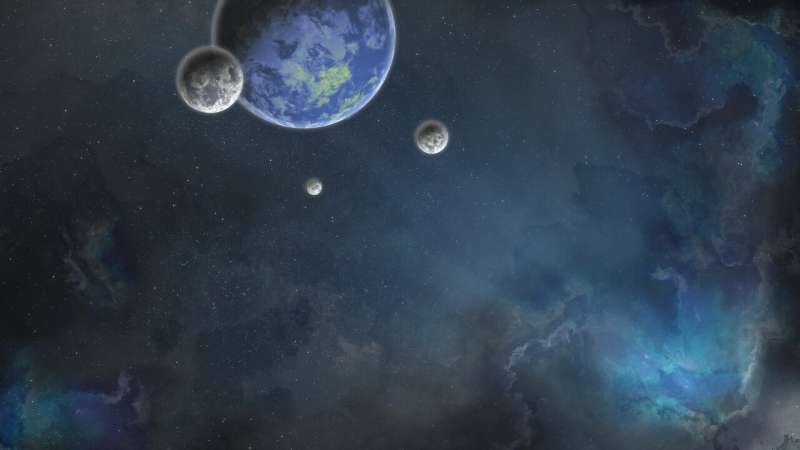This article has been reviewed according to Science X's editorial process and policies. Editors have highlighted the following attributes while ensuring the content's credibility:
fact-checked
preprint
trusted source
proofread
Suppressing starlight: How to find other Earths

One underappreciated aspect of the current flood of exoplanet discoveries is the technical marvels that enable it. Scientists and engineers must capture and detect minute signals from stars and planets light years away. With the technologies of even a few decades ago, that would have been impossible—now it seems commonplace. However, there are still some technical hurdles to overcome before finding the "holy grail" of exoplanet hunting—an Earth analog.
To help that discussion, a team of researchers led by Bertrand Mennesson at NASA's Jet Propulsion Laboratory has released a paper on the arXiv preprint server detailing the current experimental and theoretical work around one of the most critical technical aspects of researching exoplanet atmospheres—starshades.
In particular, the paper discusses the technical hurdles of one of the most interesting upcoming space technology concepts. The Habitable Worlds Observatory (HWO) was called for as part of NASA's recent decadal survey.
While it is still early in its development cycle, the general outlines of how the HWO will work are evident, even if some technical details aren't. And those general outlines point to the need for a starshade or coronagraph—or both.
The paper details the difference between a starshade and a coronagraph. By its definition, a starshade is a filter placed between the primary telescope mirror and the object it is observing. In contrast, a coronagraph is a filter placed between the primary mirror and the telescope's sensor. Both methods have advantages and disadvantages regarding the data they allow the telescope to collect, but they can also be combined.
Several labs worldwide have been working on developing starshade and coronagraph technology. However, several nuances to the test set-ups affect their work's applicability to the HWO project. Some tests are performed in a vacuum, while others are performed in air. Some tests are performed on monolith mirrored telescopes, while others are performed on segmented mirrors.
Currently, the baseline operational mode of HWO is a space-based telescope, which, given current launch size constraints, also means it has to be segmented. So, only some tests performed to validate coronagraph and starshade technologies apply to the HWO use case.
For the relevant tests, there are three particular "key performance parameters" (KPPs), as the paper calls them, which can impact the technology's viability. These are the image's "raw" contrast, the "post-calibration" contrast, and the "off-axis throughput."
Each of these has thoroughly technical definitions described in the paper. But the first two can be thought of as how easy it is to see an exoplanet before ("raw") and after ("post-calibration") an image is run through a data processing algorithm. Off-axis throughput is the percentage of light from the planet through the starlight suppression system.
Each of these three KPPs represents a trade-off with the other two. Optimizing a starlight suppression system, such as a coronagraph or starshade, requires understanding and validating those design trade-offs. The paper mentions that the details of the HWO are still in flux, so it is impossible to determine what trade-offs must be made to have a fully functional system.
Factors such as the number of exo-Earths the HWO is expected to observe, their orbital parameters, and how long the observatory will be allowed to capture data on any particular planetary system will all feed into the simulated trade-offs considered in the paper.
Most importantly, the paper's authors stated they intended to inform the technical committees of the HWO project about these trade-offs and to help guide the selection of mission parameters that might fit in with the current (or near-term) state of technical development of one of the most critical technologies for the optimal operation of the system.
HWO is still in the early planning stages and has no expected launch date. Work has started around defining the teams that will make the technical determinations to inform the selection of a starlight suppression system for the HWO. Dr. Mennesson, the paper's lead author, also happens to be one of the co-chairs of one of the committees.
But for now, there is plenty of time to flesh out the HWO design and continue developing and testing different starlight suppression technologies. If the remarkable pace of exoplanet discovery is any indication, with a little more time and attention, the telescope development community will develop an optimally designed system to help find one of the most sought-after discoveries in modern science.
More information: Bertrand Mennesson et al, Current laboratory performance of starlight suppression systems, and potential pathways to desired Habitable Worlds Observatory exoplanet science capabilities, arXiv (2024). DOI: 10.48550/arxiv.2404.18036
Journal information: arXiv
Provided by Universe Today



















